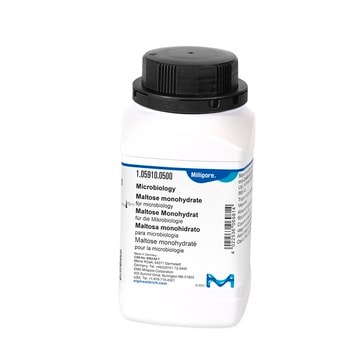105910
Salicylic acid
ReagentPlus®, ≥99%
Synonym(s):
2-Hydroxybenzoic acid
Sign Into View Organizational & Contract Pricing
All Photos(2)
About This Item
Linear Formula:
2-(HO)C6H4CO2H
CAS Number:
Molecular Weight:
138.12
Beilstein:
774890
EC Number:
MDL number:
UNSPSC Code:
12352100
PubChem Substance ID:
NACRES:
NA.21
Recommended Products
vapor density
4.8 (vs air)
Quality Level
vapor pressure
1 mmHg ( 114 °C)
product line
ReagentPlus®
Assay
≥99%
bp
211 °C (lit.)
211 °C/20 mmHg
mp
158-161 °C (lit.)
SMILES string
OC(=O)c1ccccc1O
InChI
1S/C7H6O3/c8-6-4-2-1-3-5(6)7(9)10/h1-4,8H,(H,9,10)
InChI key
YGSDEFSMJLZEOE-UHFFFAOYSA-N
Gene Information
human ... ALB(213) , PTPN1(5770)
Looking for similar products? Visit Product Comparison Guide
General description
Salicylic acid is an aromatic phenolic derivative. It can be prepared industrially via the Kolbe-Schmitt reaction. It is used as a chemical intermediate in organic synthesis for the synthesis of various organic compounds.
Legal Information
ReagentPlus is a registered trademark of Merck KGaA, Darmstadt, Germany
Signal Word
Danger
Hazard Statements
Precautionary Statements
Hazard Classifications
Acute Tox. 4 Oral - Eye Dam. 1 - Repr. 2
Storage Class Code
11 - Combustible Solids
WGK
WGK 1
Flash Point(F)
314.6 °F - closed cup
Flash Point(C)
157 °C - closed cup
Personal Protective Equipment
dust mask type N95 (US), Eyeshields, Gloves
Choose from one of the most recent versions:
Already Own This Product?
Find documentation for the products that you have recently purchased in the Document Library.
Customers Also Viewed
Ganesan Karthikeyan et al.
British journal of haematology, 146(2), 142-149 (2009-05-15)
Guidelines differ on whether acetyl salicylic acid (ASA, aspirin) should be used for prophylaxis in patients at high-risk of venous thromboembolism (VTE), principally because of differences in perceptions of its efficacy. ASA is an attractive therapeutic option because it is
E Benfeldt et al.
Acta dermato-venereologica, 79(5), 338-342 (1999-09-24)
Our aim was to simultaneously investigate 2 techniques for in vivo sampling of peripheral compartment pharmacokinetics after systemic administration of acetylsalicylic acid. Ten volunteers were given 2 g acetylsalicylic acid orally. Blood samples and dialysates from 4 microdialysis probes inserted
S Zaugg et al.
Journal of chromatography. B, Biomedical sciences and applications, 752(1), 17-31 (2001-03-20)
Acetylsalicylic acid (Aspirin) is rapidly metabolized to salicylic acid (salicylate) and other compounds, including gentisic acid and salicyluric acid. Monitoring of salicylate and its metabolites is of toxicological, pharmacological and biomedical interest. Three capillary electrophoresis (CE) methods featuring alkaline aqueous
Yunlong Du et al.
Proceedings of the National Academy of Sciences of the United States of America, 110(19), 7946-7951 (2013-04-25)
Removal of cargos from the cell surface via endocytosis is an efficient mechanism to regulate activities of plasma membrane (PM)-resident proteins, such as receptors or transporters. Salicylic acid (SA) is an important plant hormone that is traditionally associated with pathogen
Dorothea Ellinger et al.
Plant physiology, 161(3), 1433-1444 (2013-01-22)
A common response by plants to fungal attack is deposition of callose, a (1,3)-β-glucan polymer, in the form of cell wall thickenings called papillae, at site of wall penetration. While it has been generally believed that the papillae provide a
Our team of scientists has experience in all areas of research including Life Science, Material Science, Chemical Synthesis, Chromatography, Analytical and many others.
Contact Technical Service







